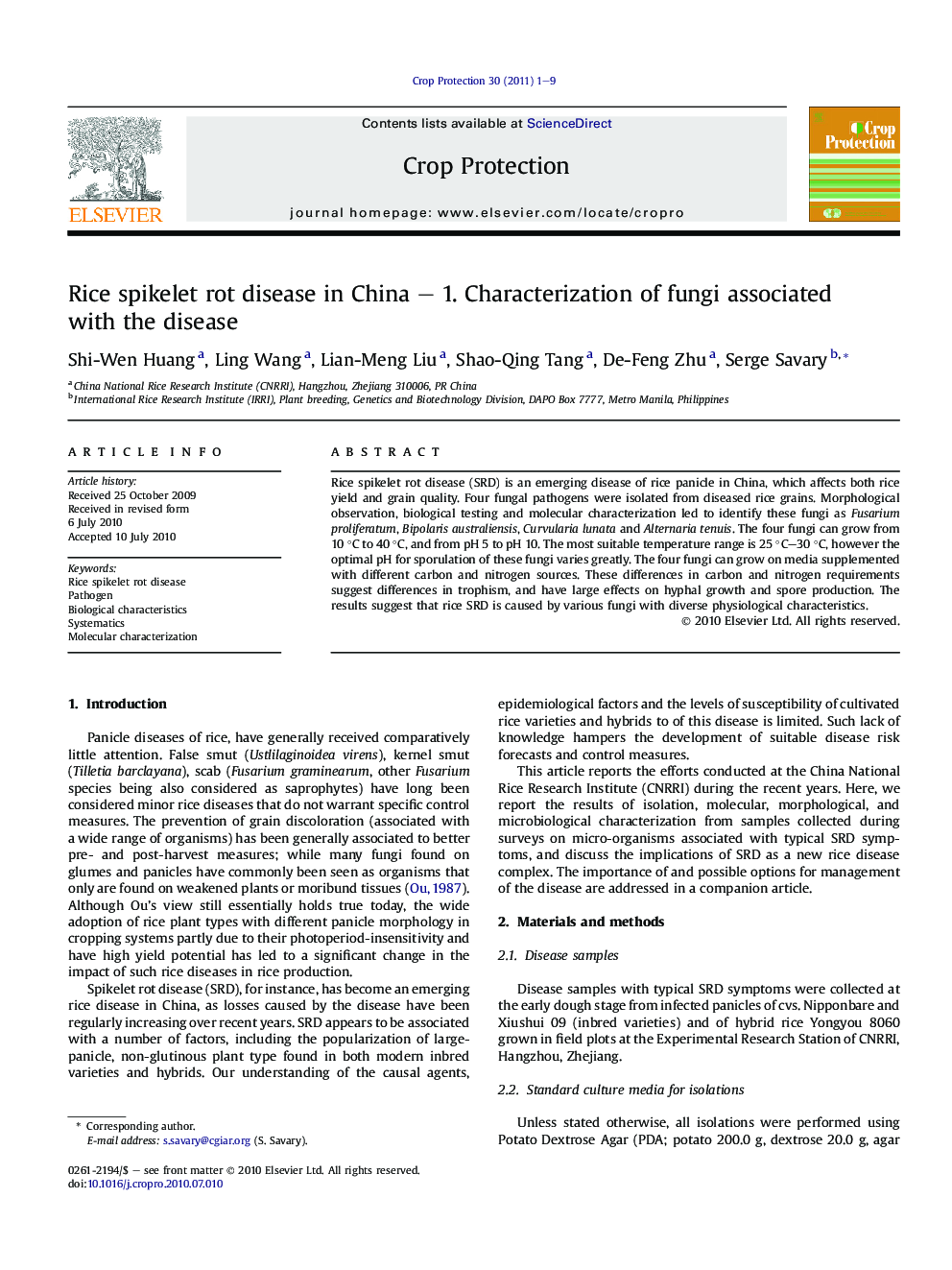| کد مقاله | کد نشریه | سال انتشار | مقاله انگلیسی | نسخه تمام متن |
|---|---|---|---|---|
| 4506709 | 1321326 | 2011 | 9 صفحه PDF | دانلود رایگان |

Rice spikelet rot disease (SRD) is an emerging disease of rice panicle in China, which affects both rice yield and grain quality. Four fungal pathogens were isolated from diseased rice grains. Morphological observation, biological testing and molecular characterization led to identify these fungi as Fusarium proliferatum, Bipolaris australiensis, Curvularia lunata and Alternaria tenuis. The four fungi can grow from 10 °C to 40 °C, and from pH 5 to pH 10. The most suitable temperature range is 25 °C–30 °C, however the optimal pH for sporulation of these fungi varies greatly. The four fungi can grow on media supplemented with different carbon and nitrogen sources. These differences in carbon and nitrogen requirements suggest differences in trophism, and have large effects on hyphal growth and spore production. The results suggest that rice SRD is caused by various fungi with diverse physiological characteristics.
Research highlightsRice spikelet rot disease (SRD) is an emerging disease of rice panicle in China, which affects both rice yield and grain quality. The disease is associated with four fungi isolated from diseased rice grains, which have been identified, on the basis of morphological, biological, and molecular data.
Journal: Crop Protection - Volume 30, Issue 1, January 2011, Pages 1–9